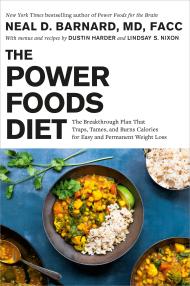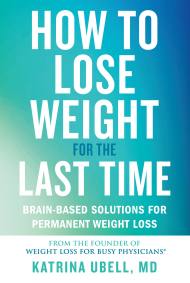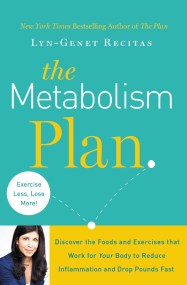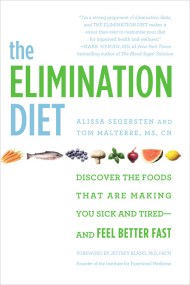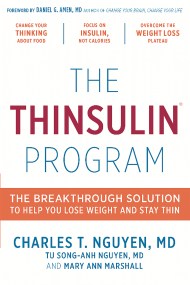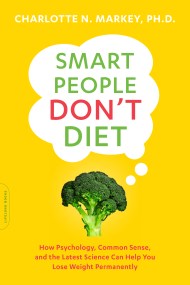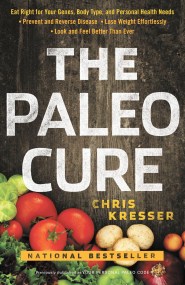We have updated our Privacy Policy Please take a moment to review it. By continuing to use this site, you agree to the terms of our updated Privacy Policy.
What's Inside
INTRODUCTION
The scientific spirit does not rest content with applying that which is already known, but is a restless spirit, ever pressing forward towards the regions of the unknown.
—Archibald Garrod, Inborn Errors of Metabolism
On a molten August late afternoon in the MetaKura Clinic waiting room, Luisa, thirty-six, an executive assistant at a multimedia conglomerate, fanned herself fervently with a magazine. Her mahogany hair was gathered in a topknot. Seated across from her, Noam, fifty-seven, a jovial self-confessed workaholic in the jewelry business, with brown fawn-like eyes, dabbed his moist forehead. Suddenly, Colby, a slender, ginger-bearded twenty-three-year-old, entered the waiting room and sat down. His head thrown back, he quickly appeared to drift into a languorous nap, but then began drooling. Perspiring profusely, he slumped forward. We all congregated around him, trying to slip glucose tablets under his tongue. Colby became nonresponsive; his eyes firmly closed.
An eerie stillness clung to his inert body.
“Well, we know he’s alive because I can hear him snoring gently,” pronounced the nurse who had been cajoling Colby to sip orange juice. Within minutes, a tangerine-vested emergency medical crew placed an intravenous drip into the young man’s arm. Colby stirred; his blood glucose levels were now restored. We collectively exhaled and resumed breathing normally. It turns out that because Colby’s body had long since stopped making insulin naturally, he had taken an injection of it to manage his type 1 diabetes.
The hormone insulin may be thought of as a stealth messenger that stimulates glucose in the blood to enter into muscle and fat cells in the body to create and store energy. Because Colby was in a rush and had forgotten to eat his lunch, as his blood glucose level declined, his brain began to malfunction. Colby is normally insulin sensitive, meaning that his body’s cells are quick to respond to the hormone’s signals to promptly regulate glucose levels in the blood within a narrow range.* As Colby’s glucose-deprived brain began to falter, it resulted in his hypoglycemic (low blood sugar) crisis.
Luisa is insulin insensitive, meaning that her body cells are genetically predisposed to a more lethargic response to the hormone, resulting in higher blood glucose levels and more insulin needed for vital metabolic functions. C-peptide lab tests, which measure circulating insulin levels in the body, show Luisa’s resting levels of the hormone to be as much as three times as high as Colby’s at the time of his emergency. At first glance, Luisa’s body appears to have adapted brilliantly to compensate for this aberration, enabling her to regularly run ultramarathons. But if you look more closely, another picture emerges. Even with all her running, Luisa has not been able to shake off her excess weight nor her foggy spells of depression.
In the case of Noam, who has type 2 diabetes, his pancreatic islet cells have to generate six times the normal amount of insulin to help him get through his twelve-hour workday. Noam’s body’s impaired response is called insulin resistance.
Consider the following statement to be one of the Ten Commandments of Biology. “All the [body’s] vital mechanisms, varied as they are, have only one object, that of preserving constant the conditions of life in the internal environment.” It was made by a vintner’s son and onetime vaudeville playwright, who later discovered a passion for medicine. Born in the village of St. Julien-en-Beaujolais, Claude Bernard (1813–1878)
* Between 4.0 and 5.4 mmol/L (72 to 99 mg/dL) when fasting and up to 7.8 mmol/L (140 mg/dL) two hours after food
was recognized in his lifetime as one of the giants of science. Bernard created the notion of the milieu interieur. His observation about the need of complex organisms to regulate a stable internal environment in the face of a subzero climate, a viral pandemic, or a heart-pounding two-hour dance led to neurologist and physiologist Walter Cannon coining the term homeostasis.1
Insulin is the primary controller of energy homeostasis in the human body. As it permeates the variegated landscape of virtually every type of human cell, its range of actions is exquisitely regulated and highly differentiated between bodily organs. When insulin resistance causes signaling defects and clutters the intracellular pathways in the body and the brain, the effects are compellingly wide-ranging.
For nearly 800 million years, insulin, this pearly-chained hormone— the simultaneously most studied and most mysterious molecule in medicine—and its precursors enabled living organisms to store energy for times of food scarcity or for sudden energy needs.2 Insulin resistance is an evolutionary form of energy conservation that enabled our Paleolithic hunter-gatherer ancestors to survive periods of food deprivation by signaling the body to store fat instead of burning glucose as energy. In our post-Neolithic age of nutritional plenty, adverse stress patterns, deficient exercise, and reduced sleep, this inherited genetic adaptation, which affects one in four people, has resulted in a range of metabolic imbalances so the body appears to have gone rogue. We, like others in the medical profession, daily witness this shift that represents a fundamental and growing change in human health as habitual insensitivity to insulin is passed from one generation to another.
There is an added twist to this picture. In 1971, Tibor Gánti, a Hungarian biochemist and author of The Principles of Life, observed that our body’s regulatory mechanisms depend on an internal-external gathering of clues, “the metabolism is a unit of life; it is inherently stable, it contains an informational subsystem and it is regulated and controlled.” In this instance, a genetic adaptation for survival has created the possibility that the body’s tightly controlled glycemic control system can be bypassed.
Externally, culture (lifestyle choice) is the enabler both for exacerbating the symptoms of insulin-signaling defects but importantly also offers pathways for its correction. Our patients did not realize that because of their diminished response to a domineering hormone, a steady diet of Luisa’s favorite Sicilian vermicelli pasta and Noam’s ancestral Jewish Mashhadi cuisine served with basmati rice would progressively change their appetite signals and increase their hunger patterns. More seriously, they did not fully appreciate that these glucose-elevating foods would make them more vulnerable to brain fog and depression.
MAPPING THE METABOLISM
Every second, hundreds and thousands of reactions occur within a cell to provide life-giving energy—collectively known as the metabolism or the command center of human performance capabilities. So powerful is this complex messaging system that its telltale imprints can be found in every cell and organ of the human body. As we will show in the chapters that follow, the full range of the metabolism is thrown off-kilter when insulin, its paramount messenger, goes into overdrive. Our survival is driven by twin needs, described by the Russian writer Ivan Turgenev thusly: “Love and hunger share the same purpose—life must never cease; life must be sustained and must create.”
Your metabolism profoundly affects your energy levels, cognition, moods, body shape, and size. It also plays a major role in your sex hormones, sleep, likelihood for muscle pain, and ability to absorb essential nutrients. Additionally, it factors into your risk for cardiovascular or psychiatric disorders—and can increase your chance of succumbing to a virus. The telltale hallmarks of defective insulin levels can cause disarray in all these spheres of human health.
While scientists do not fully understand all the mechanisms that have contributed to the rise of this increasingly prevalent metabolic imbalance, we can evaluate a range of clues. Early signs of its appearance include excess body weight and reduced fertility. We know that a pregnant mother’s habits affect her unborn child for life. During periods of neonatal distress, genes receive “tags” or instructions for their deactivation, which change their function but not their structure. The Dutch Hongerwinter (famine) of 1944 to 1945, the Great Chinese Famine from 1958 to 1961, and the food shortage in Biafra, Nigeria, from 1968 to 1970 all resulted in children of low birth weight, below what is expected for their gestational period. Par- paradoxically, as adults these individuals disproportionately struggled with excess weight and, in some instances, hypertension and type 2 diabetes.3
At our MetaKura Clinic, we find that a convincing majority of our patients who are insulin resistant were born prematurely or had a low birth weight based on their gestational period. Average body weight is on an upward trajectory the world over, and heavier women, as well as their babies, are more likely to be insulin resistant during pregnancy. Fetal insulin regulates intrauterine growth, and when the hormone’s signals are blunted, babies are born one or two pounds smaller than expected for their gestational age. This was the case with both Luisa and Noam, whose inadvertent choices in their daily regimens triggered their range of symptoms for a metabolism in distress. In our clinic experience, a minority of babies who are born large for their gestational age go on to exhibit eating disorders in later life. Our results and those of others show that with modest lifestyle adjustments, sensitivity to insulin, this commanding presence among body messengers, is linked to weight loss and improved body fat distribution.4
We hold that insulin resistance is an inherited type of metabolic pro-
file that is lifelong and one that has been programmed by birth. Despite this genetic hardwiring, the outcome is dependent on the choices that are made in diet, exercise, sleep, stress, and other areas, which is our reason for offering this book to you. The immensely good news is that by making lifestyle choices and changes as we have seen in thousands of patients at the MetaKura Clinic, the health complications associated with this silent blood sugar dysfunction are preventable and sometimes reversible.
Crucially—and here is where we believe that our work breaks new ground—we have found that most adverse insulin resistance patterns can be permanently improved within six months.
ONE IN FOUR
Each person’s molecular profile, their unique metabolic signature, can be captured in a moment in time by a lab analysis that measures huddles of fats and proteins in the body. These biomarkers, or indicators of a risk for illness, are constantly changing. One unruly biomarker can change the pattern of the others. But it doesn’t have to. As you’ll learn, with each unwelcome change in a person’s metabolism come mutatis mutandis— changing the things that need to be changed—which is an opportunity for its correction. Our goal with this book is to capture the MetaKura Clinic’s comprehensive expertise—medical, lifestyle, behavioral, nutritional, and fitness—for you to be able to maximize the full potential of your own metabolism.
With the discovery of new biomarkers and aided with artificial intelligence–enabled wearable technologies, it is now possible to offer highly personalized solutions to regulating health outcomes. We can make fairly accurate predictions about a person’s longevity based on their genes and other biomarkers, their diet, and their exercise patterns. But even without these molecular analyses, you can follow the steps that we have outlined in this book to better understand and take charge of correcting your metabolism.
For one in four people with insulin resistance, the intricate physiological architecture of their metabolism has, to varying degrees, gone astray. These types of metabolic personalities are implicated as the primary cause for type 2 diabetes and Alzheimer’s, both of which are expected to grow in global prevalence by about fifty percent in the next thirty years.5,6 Expectant mothers with gestational diabetes are more likely to have a child with autism, which is also dramatically on the rise.7 This dysregulation of insulin in the body reveals itself with a constellation of distressing symptoms: dark circles around the eyes, recurring fatigue, lingering depression or anxiety, urgent food cravings, low fertility, and a propensity for stockpiling body fat, among others. In addition to a tendency to store body fat, other features of chronically elevated levels of insulin include chronic myalgia (muscle pain and aches), a deflated libido, triglyceride dysfunction, and a greater risk for cardiovascular disease and strokes. A blunting effect on the muscle glucose transporter GLUT4 makes it harder for glucose to enter muscle cells, often leading to chronic tiredness, which, counterintuitively, can be corrected with exercise. Less well known is what we like to call the Frida Kahlo effect, the higher levels of androgenic, or male-like, hormones that we have seen in countless female patients.
Chances are, you can find symptoms of insulin resistance in your own family tree. We certainly can: A chubby, restless artist father who succumbed to a stroke in his fifties while researching Goya in Madrid. A jovial uncle, a celebrated military general who began to fade with Alzheimer’s. A disapproving aunt with a whisper of a mustache. A moody cousin who once lapsed into clinical depression. And Sunita’s mother, Manjit, dressed in her silks and artfully matched jewelry, who carries an insulin syringe in her sequined evening bags. Miraculously, by carefully following the regimen designed for her, Manjit has managed to keep her glucose levels mostly within the normal range for forty-four years.
The heroes of our book are our patients who have endured the dis- ruption of their hormones with remarkable courage and dignity. And, most important, the majority have been willing to make the necessary adjustments to become the primary champions of their own well-being, brain health, and longevity.
Noel Maclaren
When I think about my academic and clinical practice careers, I find that the peptide hormone insulin has played a central role. As a high school senior in New Zealand, I narrowed my career choices to geology or medicine. I eventually chose the latter option, perhaps because of my Presbyterian upbringing; I wanted to have a livelihood that would help people. During my first hospital residency rotation in internal medicine, I encountered a musically gifted woman in her late twenties who was blind, had no sensation in her feet, and was in renal failure because of her diabetes. She dutifully followed all of the medical advice given to her, but we, the medical profession, had clearly failed her. I began to think that I would like to discover better medical solutions for people like her and embarked on a career as an adult endocrinologist. Eventually, I moved to London, where I also became certified in the pediatric area of my specialty
As my career progressed, at Johns Hopkins School of Medicine, I, along with my able colleagues, began studies to investigate the suggestion by the late Dr. Lawson Wilkins that type 1 diabetes was an immunological disease. Our research quickly concluded that he was right.8,9 My further research at the University of Florida amplified support for this idea.10,11 We went on to show that using antibody markers, family members at risk could be identified long before the onset of type 1 diabetes, and we could screen people in the general population.12,13 This led to promising therapies for its prevention.14
Later, while at Cornell, my colleagues and I observed that women affected by polycystic ovarian syndrome (PCOS) were prone to develop- ing type 2 diabetes. Through my roles as an endocrinologist caring for children, pregnant women, and other adults, I came to understand that insulin resistance is a common genetic disorder affecting about one in four persons, with an outcome that depends upon their lifestyle choices.15 I was all too familiar with the subtle effects of insulin and began to design comprehensive new methods of predicting and reversing the effect of insulin resistance. Working with my wife, Sunita, the solutions we devise for our patients are culturally based with small but permanent lifestyle modifications so that they can be readily adapted to their lives.
Sunita Singh Maclaren
When I came to live in the United States more than thirty years ago, I resolved to try to contribute to my new hometown of Houston, Texas. My small advisory firm, which later moved to New York, designed highly tailored cultural solutions for the global challenges faced by governmental agencies, corporations, and nonprofits. These included customizing global leadership programs that we taught in parts of West Africa, Southeast Asia, and the Russian Far East based on the histories of local communities, and assessing new cross-border products and services for their cultural suitability. Aside from these projects and our global engagements with U.S. government agencies and the International Criminal Court in The Hague, we also worked extensively in healthcare and medical anthropology.
Whether we believe in Western, holistic, or other forms of medicine, our sense of our physical well-being is interpreted through our cultural filters. Healing, then, is a subtle, nuanced conversation between biology and culture. It is integral to every society and can take many forms. For example, on the walls of the Musée du quai Branly—Jacques Chirac museum of anthropology in Paris—are hundreds of masks, amulets, and charms from across the spectrum of human history and geography that were fashioned to ward off ill health.
Our firm’s fieldwork showed the explosive effect of cultural practices on underlying genetic predispositions for insulin resistance. Rice, maize, wheat, combined with sorghum, tubers such as potatoes, cassava, yams, and taro are the staples of global ethnic cuisines, which uphold a shared sense of national identity for 7 billion people in the world. Yet these foods cause a steady rise in blood sugars, which, especially for people with insulin resistance, are increasingly being linked to accelerating cognitive decline.16 In adults, it is widely acknowledged that those with type 2 diabetes are especially prone to suffer alterations in brain function and structure, although we do not fully understand the underlying mechanism.17 Social rituals like late dinners (popular in Madrid, Mumbai and Buenos Aires) and shortened sleep (customary in Tokyo and Seoul) interfere with the release of hormones like growth hormone (GH), melatonin, cortisol, testosterone, and prolactin, which are highly regulated by our sleep-wake cycle. Over two decades, my gifted colleagues and I worked on projects in cities and remote locations in thirty countries, including Kuala Lumpur, Argentina, and Papua, Indonesia, among many others. I soon realized that I had an affinity for those who felt a sense of otherness and that I enjoyed working with people to help resolve complex problems with knowledge-based programs.
I made frequent visits to BioSeek Clinics, Noel’s full-service endocrinology clinic in Manhattan, and became increasingly spellbound by the insulin-resistant patients I met. Their eyes shone as they recounted stories of their personal transformations. They were relieved to have found a name for their seemingly unrelated, maddening symptoms. Under Noel’s resourceful care, by making changes to their diet, these patients had joyfully reclaimed a sense of well-being and, as a side benefit, lost much of their unwanted body weight (or were in the process of doing so). In 2011, Noel and I decided to collaborate professionally, and we launched MetaKura (kura is the Maori word for wisdom), a clinic-cum– innovation lab for people with insulin resistance. A team of committed dietitians and fitness experts joined us to provide ongoing support to our patients. Soon we began suggesting modest adjustments in our patients’ daily sleep, exercise, and relaxation rituals, in order to add new layers of solutions that would help to stabilize their insulin levels. The cumulative effect of this approach, our patients told us, was a jolt of new energy and a noticeable improvement in their cognition and mental clarity.
People with inborn errors of the metabolism often feel misunderstood. They are unfairly blamed for their excess weight when the root cause is primarily genetic. Another reason we began the MetaKura pro-gram is because our patients’ stories of the prejudice that they encounter in their everyday life reminded us of the people who have been subjected to stigma because of their ethnicity, religion, or gender. Our goal is to support people who come to our clinic when society has chosen to dis- credit them for no good reason.
After guiding hundreds of people on their six-month journey of metabolism correction and weight loss, all the while questioning them closely about their life patterns, we have learned to recognize these “per- personalities” from afar. These collective impressions led us to design a questionnaire for determining a metabolism personality. Each type has different dietary, exercise, and sleep needs from the others. From the outset, we understood that in order for our solutions to be sustainable over a lifetime, they had to be personalized to be effective, and they had to be easy in order to be readily accommodated into people’s lives.
Our New York City location means that our patients represent a dazzling montage of humanity. They include Black opera singers, New Jersey mothers, Brazilian bankers, Orthodox rabbis, Brooklyn school- teachers, Puerto Rican software designers, and teenagers from Green- wich, Connecticut, among many others. Each has their own behavioral cues, dietary preferences, and varied routines, which are, in the words of the anthropologist Clifford Geertz, “spun in a web of [cultural] significance.”18
Our multidisciplinary approach involves an investigation of clues both from medicine and human behavior. In 1848, the physician- anthropologist Rudolf Virchow wrote, “The task of science is to stake out the limits of the knowable, and to center consciousness within them.” Once we diagnose insulin resistance, our goal is to help the individual identify the dietary, social, and behavioral adjustments they should make to keep it well under control. Our patients must enact these changes for life, and it doesn’t take long for them to see why. They are quick to tell us of the unhappy consequences they suffer when they stray from the MetaKura program, but because their goals are for the long term, we stress that they must forgive themselves for occasional lapses—because regaining control of their insulin and metabolism is for life.
INSULIN AND ITS EXCESSES
“Action!” “Easy does it!” “Switch off!” Cells take their orders from a cascade of tiny, potent signaling molecules. Unlike neurons or the immune system’s T-cells, which are the body’s two other interdependent messaging networks, hormones such as insulin can be precisely measured. There is a mathematical precision to how the body’s messenger hormones— which are quantified in nanograms, picograms, and femtograms, or one thousand billionth of a gram—work together in a way that we find similar to solving sudoku puzzles. There is an inherent, almost musical logic to the orderly and correct placement of the numbers.
In evolutionary terms, 400 million years separate humans from jaw-less hagfishes (Myxiniformes). Yet the protein structure of that ancient creature’s insulin sequence of amino acids is 61 percent similar to that of humans. This constancy over millennia of the long pearly chain that forms insulin’s structure highlights the hormone’s vital role in all living creatures. Insulin signals can be observed in the tiny earth roundworm, Caenorhabditis elegans, which has an average life span of a mere twenty days. Salmon, bovine, and porcine insulin were once extracted for human therapies. Why is insulin, described as “the secret quintessence of life” so vital? Insulin’s job is to break down our food, enabling our cells to obtain glucose for energy. We cannot survive without glucose because it fuels energy production in mammalian cells, especially the brain. Next to breathing, our survival depends upon a tight regulation of our glucose levels made possible by a sophisticated cascade of signaling responses between our vital organs, as well as adipose (fat) and muscle tissue.
THE METAKURA MASTER PLAN
Our solution is offered in three simple steps: diagnosis, prevention or correction, and lifelong maintenance. In lieu of the biomarker tests that we conduct in our clinic, we have designed the Metabolism Self- Assessment Questionnaire (see page 31). This assessment mirrors the questions that we would ask our patients in an initial clinic consultation. Once you have completed the assessment, your responses will lead you to one of four metabolism personality types: Jade, Sapphire, Emerald, or Ruby. These types are based on insights that we have gained from over twenty years of working with thousands of patients.
Part II of the book, “Elements of the Metabolic Matrix,” provides a guide to our solutions. It explains in detail, based on your metabolism personality, the ten elements of the Metabolic Matrix, all of which represent opportunities where you can intervene to improve your longevity, cognition, and sense of well-being. Pieces of this intricate jigsaw puzzle of metabolism are especially relevant for people with insulin resistance. Each chapter, which represents a separate element of a matrix, will allow you to explore the different interlocking jigsaw pieces that influence your metabolism and look for themes and patterns that may be most relevant for you.
Part III, which is focused on nutrition, offers lifelong practical suggestions for enhancing your metabolism with fresh, easy, and delicious recipes from a talented chef, a patient who joined our program and became a dear friend, Vivian Cioffi.
As with any beguiling puzzle, challenges and mysteries remain in unraveling the secrets of the intercellular processes that occur within organisms to maintain life. We have devised many solutions. Let’s begin solving the mystery of you.
Maximize Your Metabolism
Lifelong Solutions to Lose Weight, Restore Energy, and Prevent Disease
Description
Each of us fits into one of five different body types, based on our bodies' level of insulin resistance (the book includes an easy self-assessment quiz for readers to identify their type). Maximize Your Metabolism offers unique diet and exercises plans tailored for each of the five different body types, as well as core recommendations that every type should follow, including:
- A low-carb diet rich in vegetables, with modest portions of meat, eggs, cheese, plain Greek yogurt , and low sugar fruits such as Granny Smith apples, berries, and green crunchy pears
- Avoiding "healthy" foods that are actually hurting you: quinoa is a simple carbohydrate you should substitute with cauliflower rice, agave is actually worse for your metabolism than sugar, and probiotics are overrated (instead choose prebiotics, such as artichokes, leaks, and onions).
- Sleep: 6-8 hours per night (and recommended testing for sleep apnea).
- Exercise: 3+ times per week, as vigorous as you can, for as long as you can.















